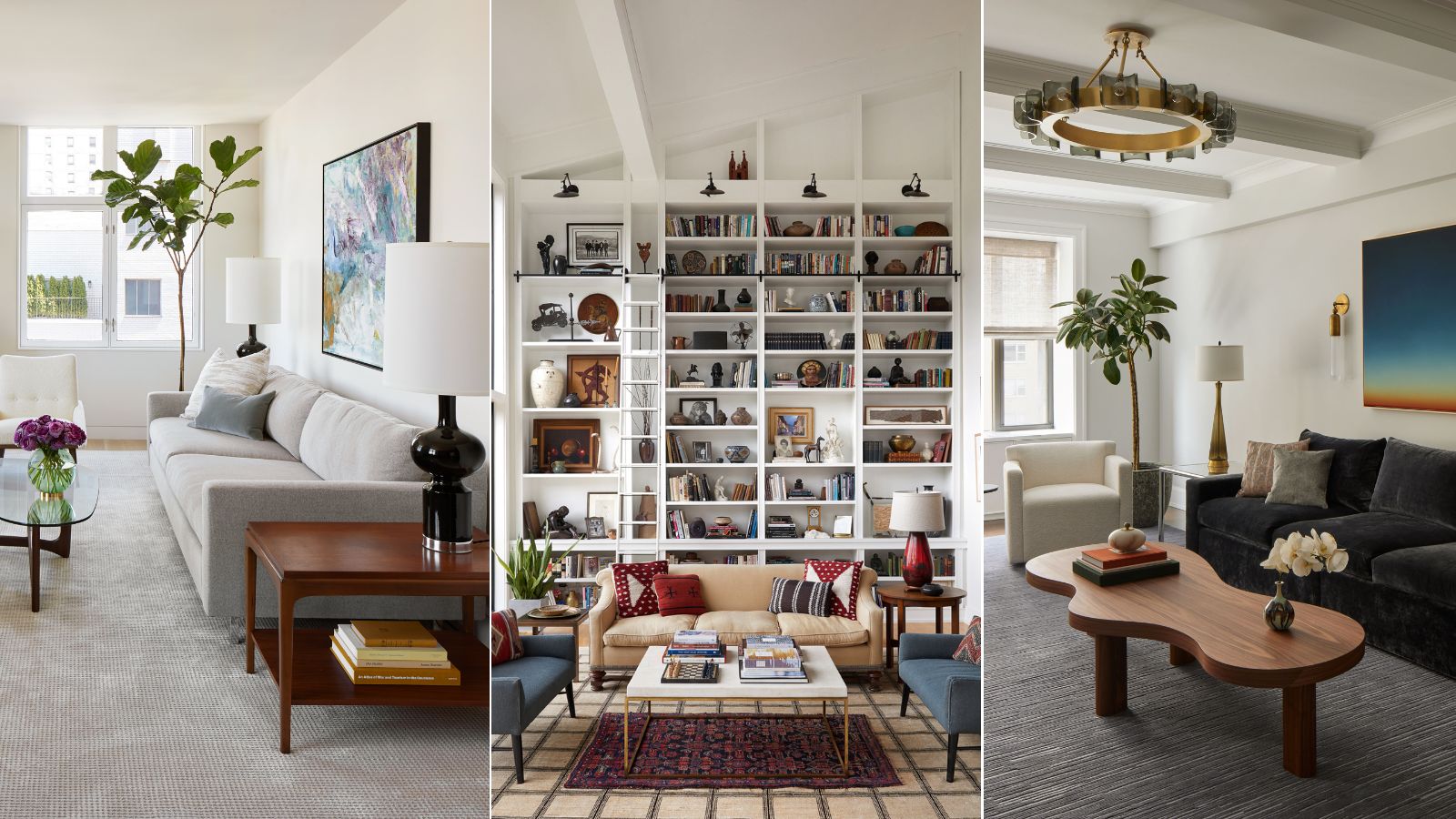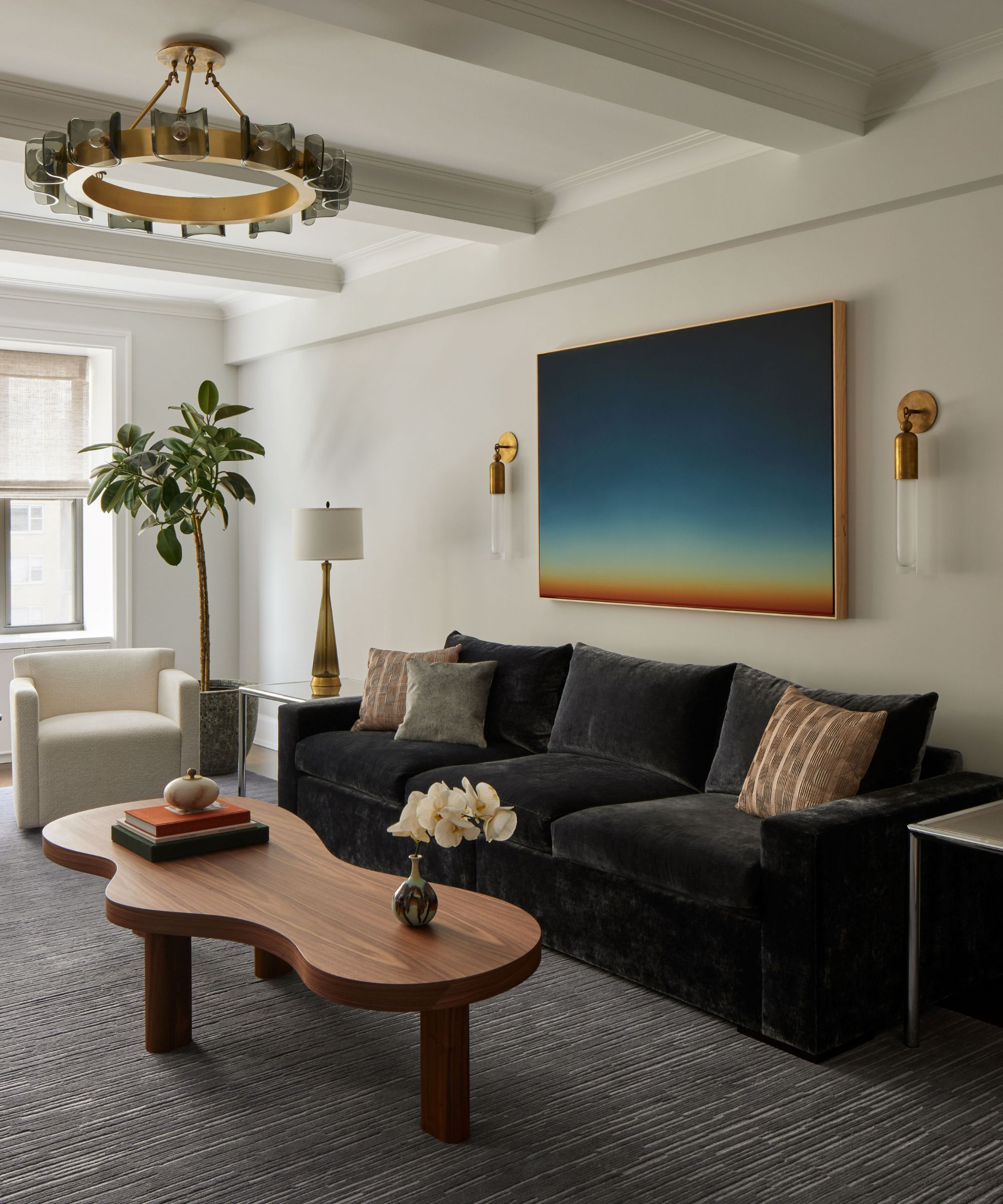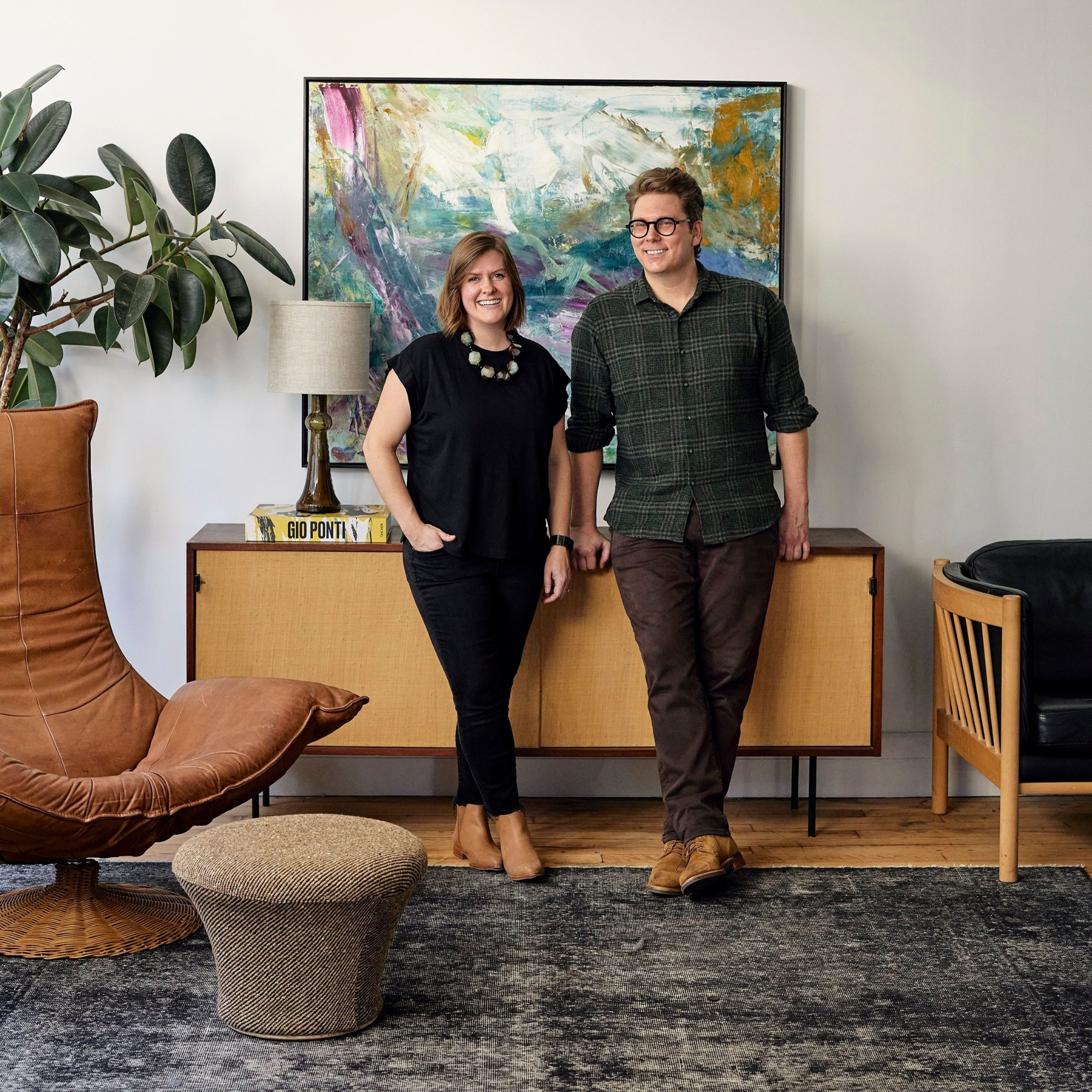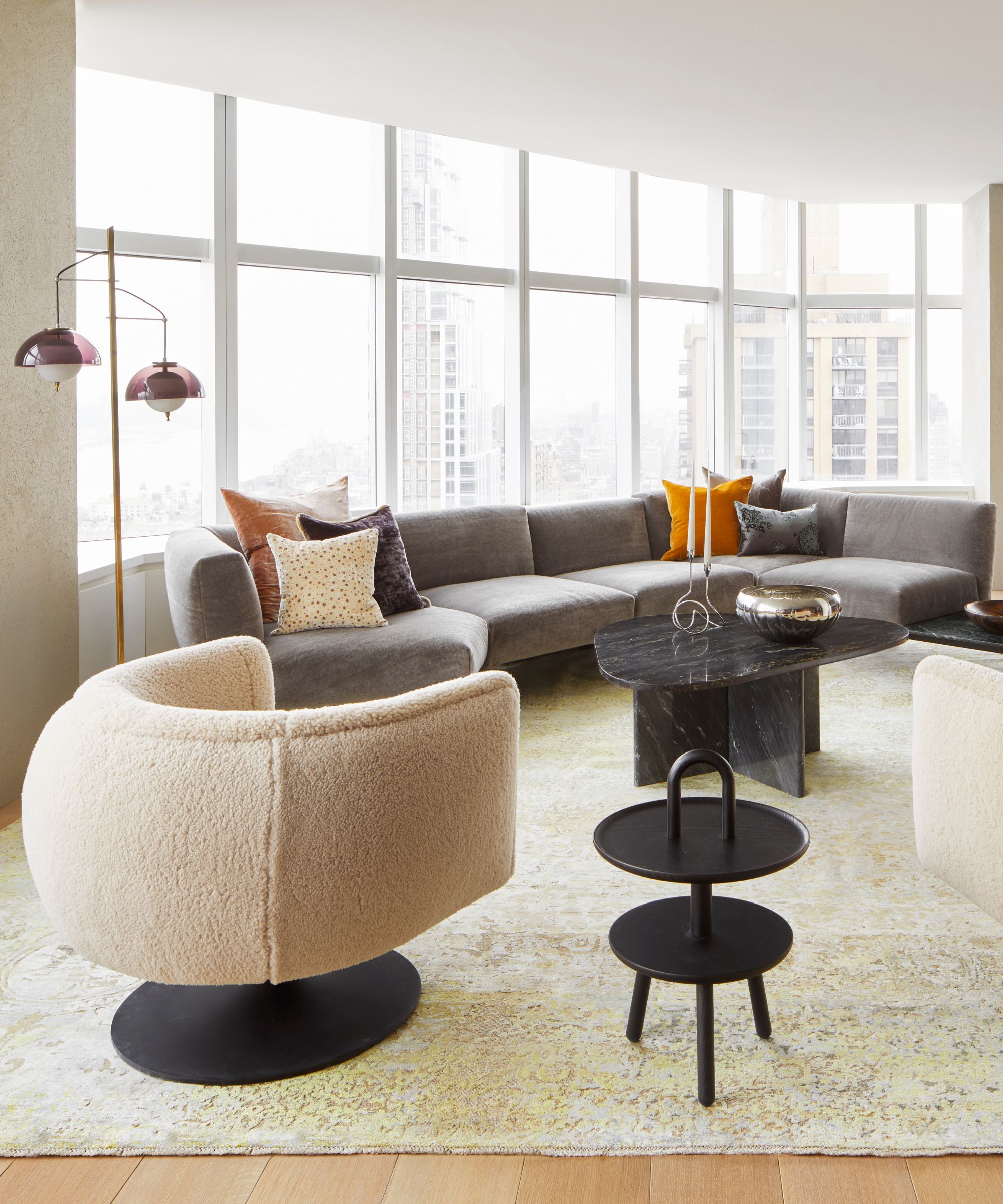How to create a balanced living room layout using vintage furniture, according to the pros
Joe McGuier and Megan Prime of Brooklyn-based JAM share their top tips for making the most of your living room layout with the help of vintage and antique pieces


Finding the perfect place for all your living room furniture and decorative accessories is easier said than done, and the process can take quite some time. If you're still stuck after several shuffles, you're far from alone – getting the arrangement right takes a discerning eye and lots of patience. And when you're working with vintage or antique furniture pieces – which often feature nontraditional sizes, shapes, and finishes – can feel like an added hurdle.
Luckily, Joe McGuier and Megan Prime – co-founders and principal designers of JAM, a Brooklyn-based architecture and design studio – know the ins and outs of styling vintage furniture. In fact, they source and decorate with unique pieces on the regular, stocking them at JAM Shop – their vintage furniture, lighting and decor storefront.
And though vintage furniture can pose added challenges when designing your home, Joe and Megan say that these well-loved pieces often lead to the best, most balanced living room layouts. These are their top tips for arranging a cohesive, stylish living room that features vintage pieces – and the design possibilities are truly endless.

Though every living room layout is different, and necessarily so, there are a few key elements to keep in mind. Adding in all the artwork, accessories, and personal touches is a vital part of the process (and will make for a home that feels like you), but starting with a solid foundation is essential.
'We generally like to incorporate a couch that’s bookended by two side tables, and two to three chairs (as space allows) positioned inward to create a conversation area. And, of course, a coffee table is a must!' he says.
No matter what furniture or accessories you opt for though, Joe says that 'it's most important that the layout suits the needs and lifestyle of the home's inhabitants' – a consideration that often gets lost in the chaos of the design process. Pick out furniture that's both functional and lovely to look at, and you'll be loving the space for years to come.

JAM, a full-service architecture and design studio based in Brooklyn, was founded in 2014 by architects Joe McGuier and Megan Prime. They also own JAM Shop, 'a destination for one-of-a-kind vintage furniture, lighting, decor and art.'

Creating balance in interior design can be quite challenging, and even more so when vintage furniture gets involved. But Megan says that paying attention to one design detail will leave you with a natural, harmonious look: scale. By considering how each piece will work alongside the next, you can begin to place items in exactly the right positions – without letting one piece or pattern take over the entire room.
Design expertise in your inbox – from inspiring decorating ideas and beautiful celebrity homes to practical gardening advice and shopping round-ups.
'It's important to consider the space holistically and ensure everything flows well. It’s also key to choose furniture that isn’t too overbearing for the size of the space. A spatially balanced living room will be not only aesthetically pleasing to the eye but will allow you to navigate easily,' says Megan.

If you focus on the vast range of finishes, shapes and styles on the market, vintage furniture can seem like a hindrance to your living room layout, not an asset. But Joe says vintage furniture's quirks can help you design any space with style and function in mind.
'Vintage furniture tends to be more compact and tidier in size and proportion, which makes it an especially great choice when working with a smaller space. It can also be easier to arrange for this reason,' he says.
Megan adds that keeping an eye out for furniture that serves more than one function when shopping will make for an easier design process later on, especially if you're designing a small living room.
Look for 'an upholstered ottoman that can also work as a coffee table or seating perch if needed,' for example, or a coffee table that transforms into hidden storage in a snap. By being intentional with each and every piece you add to the space, you'll be able to make the most of the layout, no matter how big or small the room.

Not sure where to start when shopping for vintage furniture that'll be perfect for your living room design scheme? A near-endless list of local vintage shops and fairs (plus each location's sprawling selection) makes the process quite overwhelming. But Megan says that if you take the time to measure your space and each piece you're after, you'll be left with more flexibility to experiment later on.
'It can sometimes be tricky finding just the right dimensions, but the hunt is part of the fun. Once you find the perfect pieces, create interesting layers and juxtapositions in terms of style, look and feel,' she says.

When you're working with a small space (or just want to make the most of every inch in your large, open-plan living room), it's smart to look for small ways to save square footage. Joe says that JAM has three go-to strategies for small-space layouts: glass coffee tables, pared-back window treatments and flush baseboards.
'Glass coffee tables give the illusion of more floor space, since they allow you to actually see the floor! We also like to keep window treatments minimal to allow as much natural light to pour in as possible and preserve a sense of airiness. When space is especially tight and every inch counts (in a city apartment, for example!), we’ll make the baseboards flush to the wall to maximize every last bit of floor area,' says Joe.

'Choosing furniture that is too large or overbearing for the space it occupies is definitely one of the most common mistakes we’ve seen that can easily make a living room feel cramped and uninviting,' says Megan.
Though that oversized sofa or larger-than-life artwork might be appealing online or in the store, it's always best to view items in person and visualize how they'll fit in with the rest of your space. Scale is one of the most important elements of successful interior design, and it all starts with the pieces you pick out. Megan adds that rugs are of particular importance here.
'Make sure you get the right size rug! In general, nearly all the furniture in your living room should fit within the area of the rug,' she says.
Vintage furniture can help, not hinder, your living room layout endeavors, so don't shy away from classic, timeless pieces. With these clever tips in mind, you'll be on your way to a transitional, characterful look that'll never age.

Abby was the Interior Design News Editor at Homes & Gardens and is now studying for her Master's degree in Journalism at City University, London. Prior to joining our team, she worked with Better Homes & Gardens, where she wrote and edited content about home decor, gardening tips, food news, and more. She studied Journalism and English Literature at New York University and moved to London to pursue her love of writing in 2023.